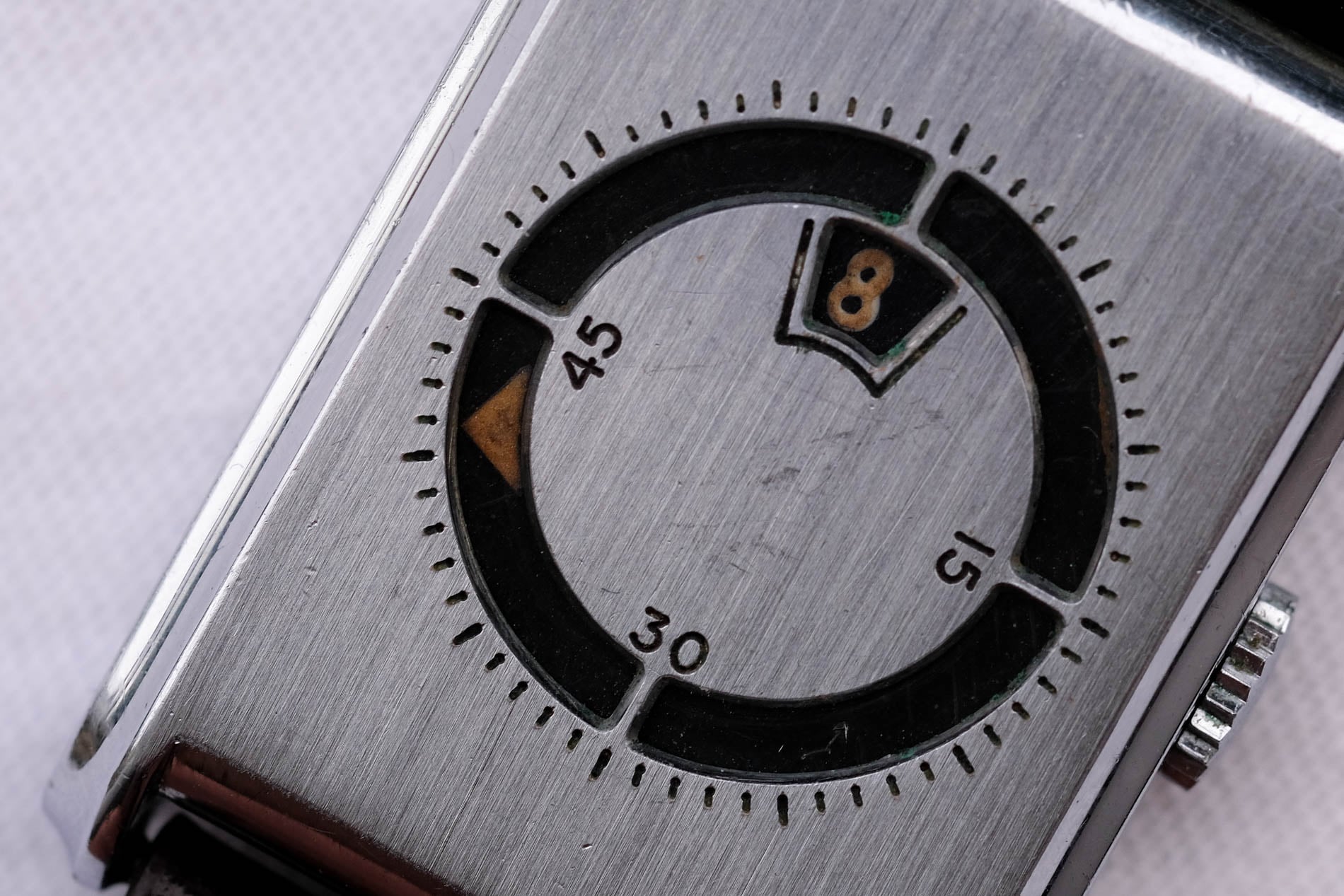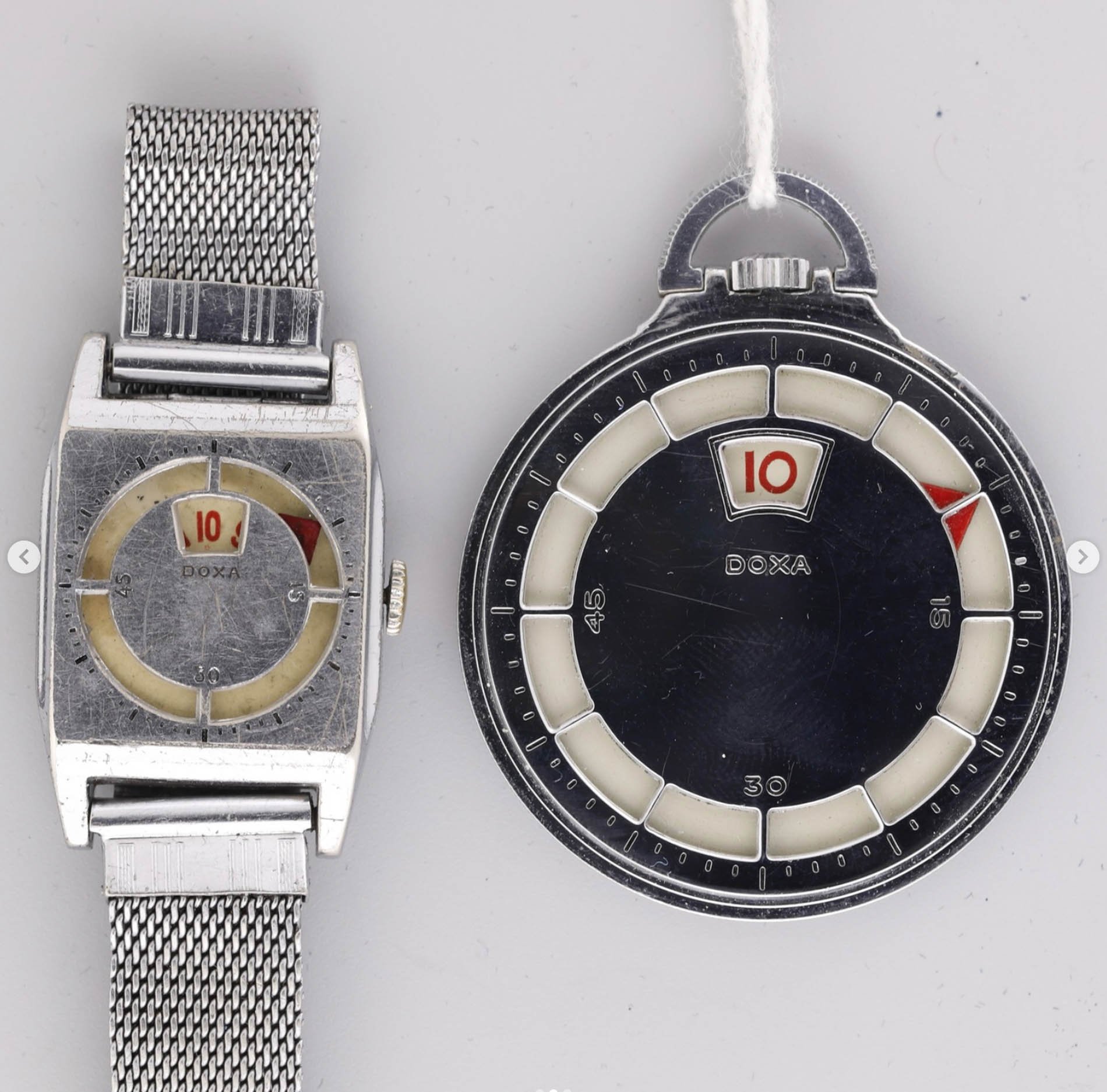#TBT Jump Into The World Of Vintage Watches With The Stunning Doxa Jump Hour
The older I get, the fonder I become of rectangular watches. Today, we have such a watch that got my attention last week. It’s one of the most beautiful rectangular jump-hour watches from the 1930s I have ever seen. And maybe it’s a bit surprising that it was made by Doxa.
Until about 10 days ago, the Mido Direct Time was my preferred vintage rectangular jump-hour watch. It has been on my shopping list for quite some time. It slipped through my fingers twice as I was outbid in an auction both times. But after comparing the Mido Direct Time to my latest discovery, I’m afraid I may have a new jump-hour hero. Meet the Doxa Jump Hour powered by caliber 2.
A mysterious Doxa
You won’t find much info about this watch because the Doxa branding is hidden under the case. With no brand name stamped on the outside, I wouldn’t be able to assign the correct manufacturer to it. We can only do so thanks to the “naked” dial shots, which are truly astonishing. The thick lume has aged in such a great fashion that it is impossible not to like it.
An ingenious dial
There are tons of jump-hour case designs from the ’30s, most of which have a smaller window to display the hours and a slightly bigger arc aperture to reveal a rotating minute disc. What Doxa did here, though, I haven’t seen before. There are four arc-shaped cuts through the metal case, through which you can see a floating triangular indicator showing the minutes. This indicator is an actual hand, but only the tip is visible. The minute track is stamped on the top of the case into the metal. While 15, 30, and 45 minutes are marked from inside the arc-shaped cuts and far away from the minute track, this works magically well because it looks like the arrow is sliding between the numbers.
Details matter
Among other details worth mentioning, notice the thin crown and how nicely it fits the case. I would say it may even be original. Vertical brushing is an era signature, and thanks to that, the metal couldn’t look more like metal. Added to the otherwise minimalist design, there is the only “redundant” U-shaped groove around the hour window, but I guess that glamorizes it and gives it premium attention. The only unknown is the crystal. I’d love to see how thick it is and how it fits into the case, but the dealer doesn’t have any other examples, and someone bought the watch already. If the new owner is reading this article, please chime in!
Value
It seems to be a pretty rare watch. “To my knowledge, there’s no reference number nor model name for this watch. I’ve only seen three of four of them, two of which were pocket watches,” says Mr. Hillman, the UK-based collector who listed the watch for sale. He didn’t want to disclose the exact figure it sold for, but it was over €2,000. I estimate that a passionate Doxa collector would pay €3,000–4,000 for it.

Image: Ruud Petrus Gerhardus van Rijn (@jumphourking)
Variations
Mr. Hillman sent me a link to two other examples. Each has a different case, and one even has a stamped Doxa logo. Both have a white dial with a pointer minute hand and hour numerals printed in “racing” red. There are even white and black versions of the same style of pocket watch. I have to say I vote for the black dials on both the wristwatch and pocket watch. That pocket watch is also incredibly cool.
Last thoughts
This Doxa Jump Hour represents the best of the 1930s. If you look at whatever you have in your watch collection and now look back at the Doxa Jump Hour, it will reassure you just how rich the vintage watch spectrum can be. Sadly, this watch had already been sold when I bumped into it online. If you spot another, get it and run! Or let me know so I can take zillions of shots for Fratello’s #TBT. Happy hunting.





